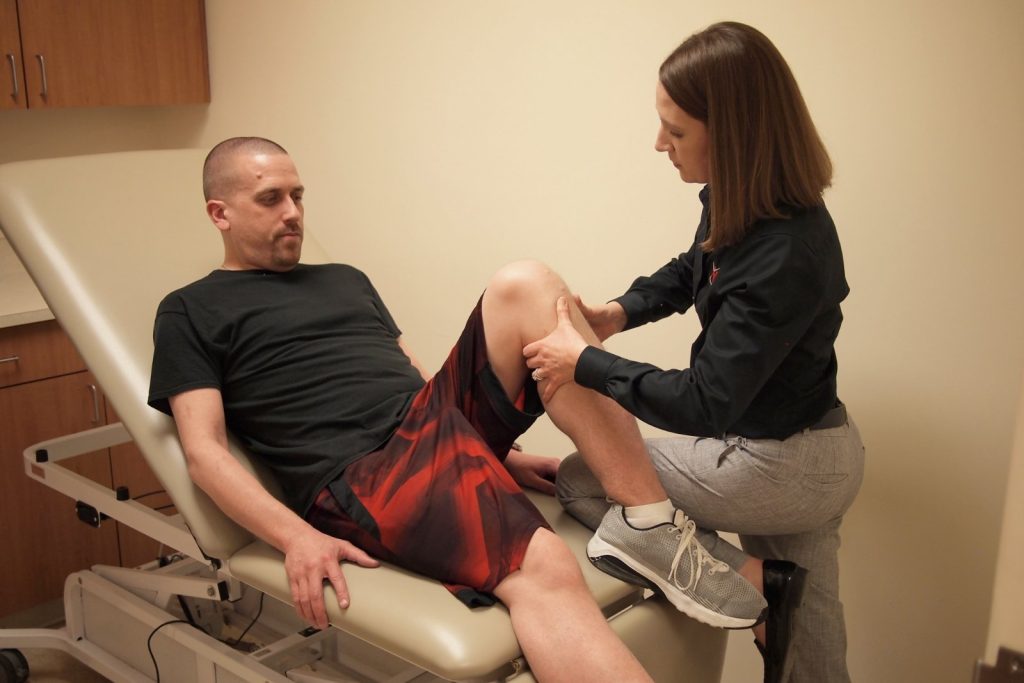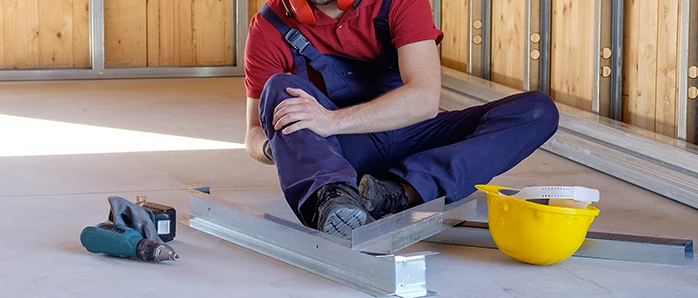Many decision-makers understand the impact onsite employment testing can have on their organization, from condensing hiring timelines to reducing injuries and boosting retention . But despite this awareness, many employers still hesitate to pursue a testing program due to the perceived difficulty of setting up and implementing an effective process.
The truth is that regardless of how many employees and locations your organization has, implementing post-offer employment testing is both easy and efficient – especially when Fit For Work does the heavy lifting.
Here is a closer look at the steps involved in implementing legal, ADA- and EEOC-compliant employment testing within your organization.
Test development
Once your organization reaches out and expresses interest in launching a testing program, the development process begins. The first step in this process is the Physical Demands Analysis (PDA) .
Physical Demands Analysis (PDA)
The PDA is a thorough, onsite review of all positions to be tested. This includes:
- Observation of jobs being performed
- Interviews with employees and supervisors
- Measurement of material-handling demands (e.g. lifting, carrying, pushing, pulling)
- Measurement of any other physical demands
- Recording of positions candidate may be in throughout the workday (e.g. standing, kneeling, squatting, climbing)
Once completed, the PDA is reviewed regularly to ensure testing requirements are valid and that they continue to accurately reflect the physical demands of each position being tested.
Job-specific test development
After the PDA is completed, job-specific tests are developed by Fit For Work’s in-house Certified Professional Ergonomists (CPEs). The CPEs utilize the PDA to ensure the tests are made to simulate the essential functions of the job as closely as possible. We use your equipment, tools, and materials in the tests, making sure any actual items that will be handled are incorporated wherever possible.
Functional employment testing is not a psychological exam, an equipment competency test, or a physical fitness test. It is used solely to assess a candidate’s ability to physically perform the essential functions of the position for which they are being hired. Without knowing a new hire candidate’s physical and functional abilities as related to the essential job functions, the risk of injury to the new hire candidate and their coworkers is greater.
The testing process also looks at the medical side, screening for key medical conditions that could impact a new hire candidate’s safety to perform the testing process or to work in the position sought. Comprehensive medical measures obtained during the testing process also provide baseline data for the employer in the event of injury on the job. These findings become relevant in the future if needed for medical management and disability determination.
Mental and cognitive screening
Use of cognitive or mental screenings is allowed under the EEOC during the post-offer process; however, employers need to use caution when utilizing these types of tests to avoid unintentional discrimination on the basis of age, race, sex, national origin, disability, or religion, which could lead to broader issues of unwanted disparate impact.
It is also important to note who will be providing the mental and physical tests. Just as you wouldn’t want a psychologist to perform a musculoskeletal exam, you wouldn’t want an occupational or physical therapist performing the mental/cognitive testing. Scope of practice, i.e. working within the boundaries of your professional education, experience, and competency, is extremely important to avoid potential EEOC violations.
Accuracy of testing
After the PDA is complete and job-specific tests have been developed, a representative from your organization is asked to review and approve all testing criteria to ensure accuracy and efficacy. Accuracy of testing criteria as compared to essential job functions is critical to a valid and legally-defensible testing process.
The ADA/EEOC require post-offer testing protocols to be “job-related and consistent with business necessity,” meaning they accurately reflect the job. When testing protocols are not in alignment with essential job functions, an employer is at risk for legal action.
For example, without ensuring the accuracy of the test through validation processes, the test can be more difficult than what the job involves and/or the test may ask someone to perform movements that do not occur during the job. This could include using the same test at two locations and testing lifting an item weighing 50 lbs., but at one facility the maximum a person would lift as part of their job would be 30 lbs. Both of those scenarios will decrease the job candidate pool due to the increased physical demands, will increase the potential for disparate impact, and will be considered discriminatory since they are not related to the job being performed.
Testing begins
Once the work has been done to analyze your processes and develop the right tests, the testing program is ready to be rolled out to prospective candidates.
After you (the employer) issue a contingent offer to the candidate, any other offer contingencies are also resolved, such as drug testing, background checks, and physicals.
Then, Fit For Work’s onsite providers are ready to complete the post-offer test. Here’s what that process looks like.
- A medical history interview with a Fit For Work clinician.
- Cardiovascular screening and strength testing.
- A comprehensive review of baseline medical measures by a licensed FFW physical or occupational therapist.
- If necessary, the physician consent process is initiated.
- The candidate then completes simulation of essential functional tasks. In all, a thorough post-offer test typically takes 1-1.5 hours to complete.
- The qualification report is generated and provided to the employer within 24 hours of onsite test completion.
Performing functional employment testing onsite speeds up the entire testing and hiring process compared to offsite clinics, where tests may take up to 48 hours to schedule due to patient appointments that must be worked around. Fit For Work’s cloud-based portal allows for real-time scheduling of testing appointments, as well as a live dashboard of test results. The cloud-based portal also allows for regular reporting to monitor the efficiency of testing, total screening rate, results by position, and more.
Fit For Work is a licensed provider of WorkSTEPS employment testing, which is readily scalable and reproducible across your entire organization – no matter how large or small. Once implemented, onsite testing provides instant benefits and ROI by helping you hire the right candidates more efficiently and ensuring they remain safe, productive, and successful.
Contact us today to begin crafting employment tests designed to decrease injuries while increasing the speed of hiring and boosting retention.





